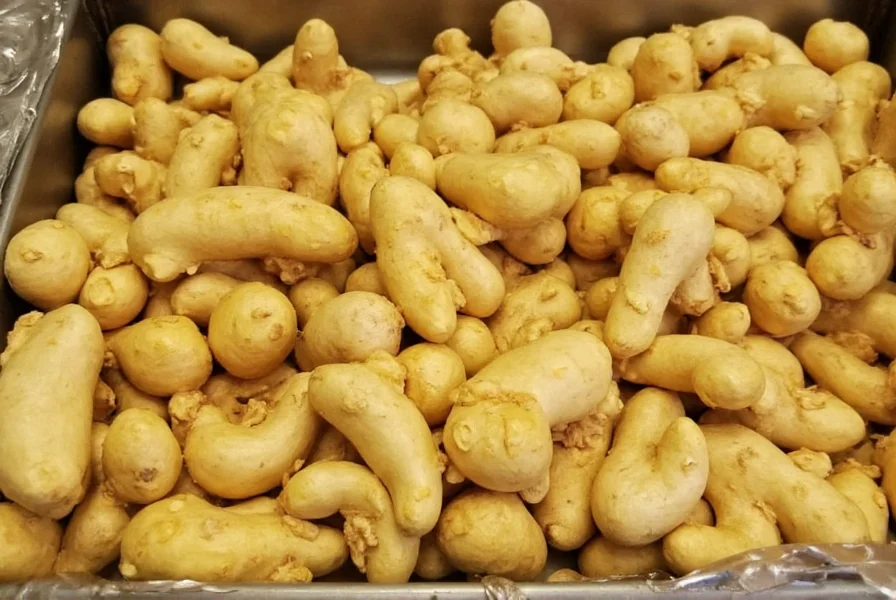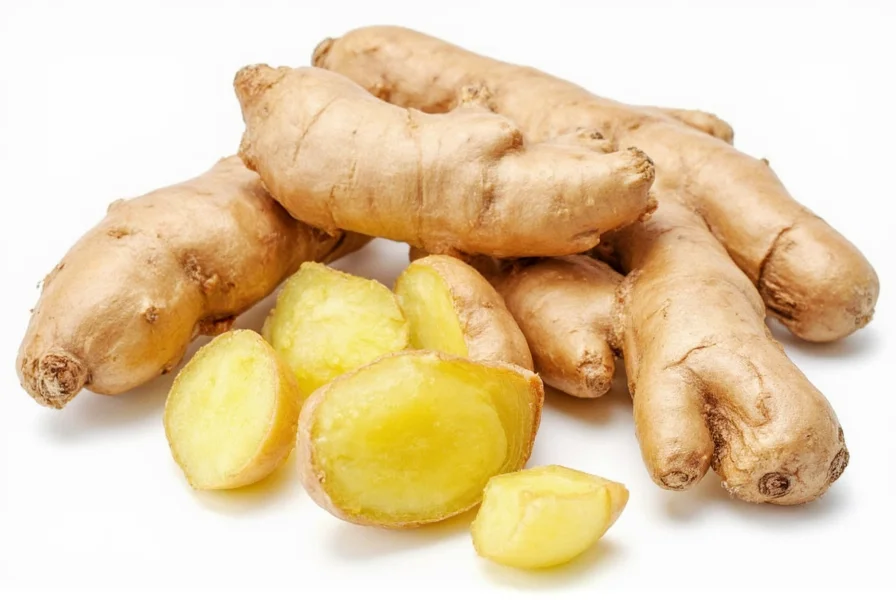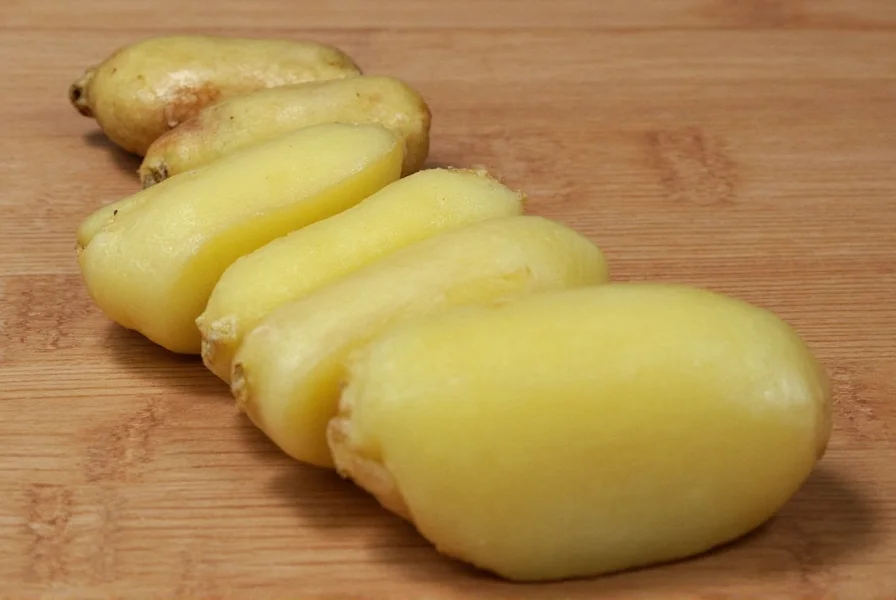If you're searching for 'told ginger,' you're likely looking for information about 'old ginger'—mature ginger root with a stronger, spicier flavor profile commonly used in cooking and traditional medicine. Old ginger differs significantly from young ginger in texture, potency, and culinary applications.
When home cooks and professional chefs search for 'told ginger,' they're typically seeking information about mature ginger root—often mistakenly typed as 'told' instead of 'old.' This common search query reveals a genuine need for clarity about ginger varieties and their proper culinary applications. Understanding the distinction between young and old ginger can dramatically improve your cooking results and maximize flavor potential.
What Exactly Is Old Ginger?
Old ginger, sometimes referred to as mature ginger, is harvested after 8-10 months of growth, compared to young ginger which is harvested at 5-6 months. This extended growing period creates significant differences:
| Characteristic | Young Ginger | Old Ginger |
|---|---|---|
| Texture | Thin, tender skin; moist flesh | Thick, tough skin; fibrous flesh |
| Flavor Profile | Milder, sweeter, less pungent | Stronger, spicier, more intense heat |
| Culinary Best Uses | Salads, pickling, raw applications | Cooking, baking, medicinal preparations |
| Storage Life | 2-3 weeks refrigerated | Several months when properly stored |
The Science Behind Ginger Maturation
As ginger rhizomes mature, their chemical composition undergoes significant changes. Old ginger develops higher concentrations of gingerols—the compounds responsible for ginger's characteristic heat and many health benefits. Research shows mature ginger contains approximately 20-30% more gingerols than its younger counterpart.
This chemical transformation explains why old ginger delivers that distinctive 'kick' in dishes like stir-fries, curries, and gingerbread. The increased fiber content also makes old ginger less suitable for raw applications but ideal for cooking methods that benefit from its robust flavor profile.

Culinary Applications for Old Ginger
Professional chefs consistently reach for old ginger when creating dishes that require:
- Asian stir-fries and sauces where deep flavor penetration is essential
- Baking applications like gingerbread, cookies, and spice cakes
- Medicinal preparations such as ginger tea for colds and nausea
- Preserves and chutneys requiring strong ginger presence
When substituting old ginger for young ginger in recipes, use approximately 25% less to avoid overpowering other flavors. The concentrated nature of mature ginger means a little goes a long way in most culinary applications.
Proper Selection and Storage Techniques
When shopping for old ginger, look for these quality indicators:
- Firm, heavy rhizomes with tight skin (wrinkles indicate age but not necessarily poor quality)
- Minimal soft spots or mold growth
- A strong, spicy aroma when scratched
Store old ginger properly to maximize shelf life:
- Refrigerate whole, unpeeled ginger in a paper bag inside your vegetable crisper
- Freeze peeled ginger for long-term storage (grate frozen ginger directly into dishes)
- Submerge in sherry or vodka for preservation while enhancing flavor

Health Benefits Comparison
While both ginger varieties offer health benefits, old ginger's higher concentration of active compounds makes it particularly valuable for:
- Digestive relief—more effective for nausea and motion sickness
- Inflammation reduction—superior for joint pain and muscle soreness
- Immune support—stronger antiviral properties during cold and flu season
- Circulation improvement—more potent vasodilating effects
Traditional medicine systems like Ayurveda and Traditional Chinese Medicine specifically recommend mature ginger for certain therapeutic applications due to its intensified properties.
Common Misconceptions Clarified
Several myths persist about old ginger that deserve clarification:
- Misconception: Old ginger is always dried ginger
Reality: Old ginger refers to mature fresh ginger, not dried. Dried ginger is a separate product with even more concentrated properties. - Misconception: Wrinkled ginger is spoiled
Reality: Some wrinkling is normal in mature ginger and doesn't indicate spoilage if the rhizome remains firm. - Misconception: Old ginger can't be used raw
Reality: While less common, finely grated old ginger can add intense flavor to certain raw preparations like dressings and marinades.
Practical Cooking Tips
Maximize your old ginger experience with these professional techniques:
- Use a spoon to peel ginger—the curved edge follows the rhizome's contours with minimal waste
- Freeze whole ginger rhizomes—frozen ginger is easier to grate and preserves flavor longer
- Create ginger syrup by simmering sliced old ginger in equal parts water and sugar for versatile culinary use
- Store peeled ginger in sherry for enhanced flavor and extended shelf life
Conclusion
Understanding the distinction between young and old ginger transforms your cooking and maximizes flavor potential. When searching for 'told ginger,' you're likely seeking information about mature ginger root—a culinary powerhouse with distinctive characteristics that make it indispensable in many recipes. By selecting, storing, and using old ginger properly, you'll elevate your dishes with its robust, complex flavor profile that younger ginger simply cannot replicate.
What's the difference between old ginger and young ginger?
Old ginger is harvested after 8-10 months and has thicker skin, more fiber, and a stronger, spicier flavor with higher gingerol content. Young ginger is harvested earlier (5-6 months), has thinner skin, milder flavor, and is more suitable for raw applications.
Can I substitute old ginger for young ginger in recipes?
Yes, but use approximately 25% less old ginger when substituting for young ginger due to its more concentrated flavor. Old ginger works best in cooked dishes while young ginger is better for raw applications.
How can I tell if old ginger has gone bad?
Bad old ginger will feel soft or mushy, have visible mold growth, emit a sour smell, or show significant darkening. Some wrinkling is normal in mature ginger as long as it remains firm when pressed.
Why does old ginger have more health benefits than young ginger?
Old ginger contains higher concentrations of gingerols and other bioactive compounds due to its longer maturation period. Research shows mature ginger has approximately 20-30% more gingerols, which are responsible for many of ginger's therapeutic properties including anti-inflammatory and digestive benefits.
What's the best way to store old ginger for long-term use?
The best storage method for old ginger is freezing whole, unpeeled rhizomes. Frozen ginger can be grated directly into dishes and maintains quality for 6+ months. Alternatively, store in the refrigerator in a paper bag inside the vegetable crisper for 3-4 weeks, or preserve in sherry or vodka for both extended shelf life and enhanced flavor.
Frequently Asked Questions
What's the difference between old ginger and young ginger?
Old ginger is harvested after 8-10 months and has thicker skin, more fiber, and a stronger, spicier flavor with higher gingerol content. Young ginger is harvested earlier (5-6 months), has thinner skin, milder flavor, and is more suitable for raw applications.
Can I substitute old ginger for young ginger in recipes?
Yes, but use approximately 25% less old ginger when substituting for young ginger due to its more concentrated flavor. Old ginger works best in cooked dishes while young ginger is better for raw applications.
How can I tell if old ginger has gone bad?
Bad old ginger will feel soft or mushy, have visible mold growth, emit a sour smell, or show significant darkening. Some wrinkling is normal in mature ginger as long as it remains firm when pressed.
Why does old ginger have more health benefits than young ginger?
Old ginger contains higher concentrations of gingerols and other bioactive compounds due to its longer maturation period. Research shows mature ginger has approximately 20-30% more gingerols, which are responsible for many of ginger's therapeutic properties including anti-inflammatory and digestive benefits.
What's the best way to store old ginger for long-term use?
The best storage method for old ginger is freezing whole, unpeeled rhizomes. Frozen ginger can be grated directly into dishes and maintains quality for 6+ months. Alternatively, store in the refrigerator in a paper bag inside the vegetable crisper for 3-4 weeks, or preserve in sherry or vodka for both extended shelf life and enhanced flavor.











 浙公网安备
33010002000092号
浙公网安备
33010002000092号 浙B2-20120091-4
浙B2-20120091-4